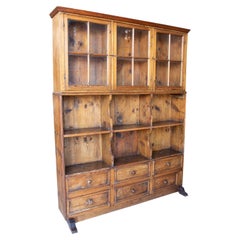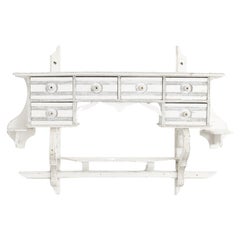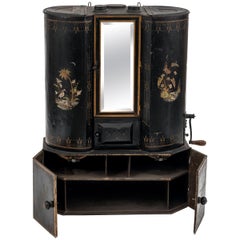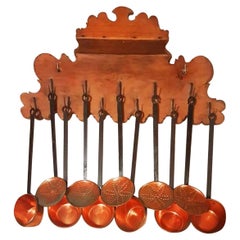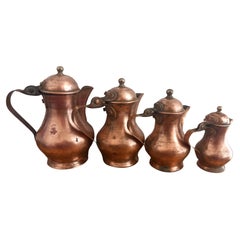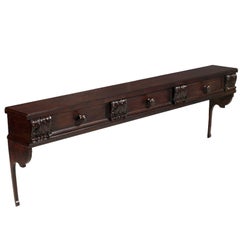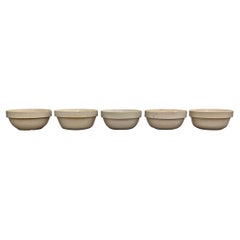Antique Kitchen Shelves
Mid-19th Century English Antique Kitchen Shelves
Pine, Paint
Early 20th Century Spanish Antique Kitchen Shelves
Glass, Wood
Early 20th Century Belgian Antique Kitchen Shelves
Wood
Early 1900s Belgian Rustic Antique Kitchen Shelves
Iron
Late 19th Century Aesthetic Movement Antique Kitchen Shelves
Metal
19th Century Spanish Rustic Antique Kitchen Shelves
Copper, Iron
Early 20th Century Italian Rustic Antique Kitchen Shelves
Copper, Brass
Early 1900s Italian Art Nouveau Antique Kitchen Shelves
Walnut
Early 20th Century American Country Antique Kitchen Shelves
Stoneware
Late 19th Century Chinese Meiji Antique Kitchen Shelves
Cane, Raffia, Rattan, Wood
Mid-19th Century Hungarian Primitive Antique Kitchen Shelves
Elm, Pine
Early 20th Century Spanish Antique Kitchen Shelves
Metal
19th Century Antique Kitchen Shelves
Wood
Early 20th Century American Art Deco Antique Kitchen Shelves
Oak
Early 20th Century Unknown Antique Kitchen Shelves
Mahogany
Early 20th Century Italian Country Antique Kitchen Shelves
Fir
Late 19th Century French Folk Art Antique Kitchen Shelves
Wood
19th Century Welsh Antique Kitchen Shelves
Wood
Mid-19th Century English Georgian Antique Kitchen Shelves
Glass, Mahogany
1850s Italian Antique Kitchen Shelves
Walnut
19th Century English George IV Antique Kitchen Shelves
Mahogany
19th Century English Antique Kitchen Shelves
Bamboo, Wood
Early 1600s Italian Romantic Antique Kitchen Shelves
Pine
19th Century French Renaissance Revival Antique Kitchen Shelves
Wood
18th Century Italian Antique Kitchen Shelves
Walnut
Early 20th Century Chinese Qing Antique Kitchen Shelves
Metal
Early 20th Century Indonesian Antique Kitchen Shelves
Wood
1840s Danish Empire Antique Kitchen Shelves
Mahogany
19th Century English Antique Kitchen Shelves
Brass
19th Century Indonesian Dutch Colonial Antique Kitchen Shelves
Teak
Early 20th Century Chinese Qing Antique Kitchen Shelves
Bronze
Early 20th Century French Mid-Century Modern Antique Kitchen Shelves
Walnut
Early 20th Century French Mid-Century Modern Antique Kitchen Shelves
Metal
Early 20th Century French Mid-Century Modern Antique Kitchen Shelves
Metal
18th Century English Antique Kitchen Shelves
Oak
19th Century Japanese Antique Kitchen Shelves
Zebra Wood, Glass, Wood
19th Century English Antique Kitchen Shelves
Glass, Pine
19th Century American Federal Antique Kitchen Shelves
Brass
Early 19th Century English Antique Kitchen Shelves
Brass
Early 19th Century English Antique Kitchen Shelves
Mahogany
Early 20th Century Swedish Art Deco Antique Kitchen Shelves
Metal
19th Century Antique Kitchen Shelves
Oak
Late 19th Century French Louis XV Antique Kitchen Shelves
Wood
Early 20th Century English Edwardian Antique Kitchen Shelves
Mahogany, Boxwood
Late 18th Century Dutch Antique Kitchen Shelves
Glass, Oak
Late 19th Century Hungarian Country Antique Kitchen Shelves
Pine
19th Century French Country Antique Kitchen Shelves
Wood
Early 20th Century Hungarian Country Antique Kitchen Shelves
Pine
Early 20th Century British Antique Kitchen Shelves
Wood
Late 19th Century Italian Antique Kitchen Shelves
Iron
Early 20th Century Hungarian Antique Kitchen Shelves
Pine
Late 19th Century Hungarian Rustic Antique Kitchen Shelves
Pine
19th Century Spanish Antique Kitchen Shelves
Wood
Late 19th Century British Antique Kitchen Shelves
Oak
Late 19th Century French Antique Kitchen Shelves
Pine
Mid-19th Century Chinese Qing Antique Kitchen Shelves
Spruce
1890s English Antique Kitchen Shelves
Mahogany, Oak, Pine
19th Century British Jacobean Antique Kitchen Shelves
Wood
1920s French Antique Kitchen Shelves
Oak
Early 20th Century French French Provincial Antique Kitchen Shelves
Brass
- 1
Antique Kitchen Shelves For Sale on 1stDibs
How Much are Antique Kitchen Shelves?
Finding the Right Storage-case-pieces for You
Of all the vintage storage cabinets and antique case pieces that have become popular in modern interiors over the years, dressers, credenzas and cabinets have long been home staples, perfect for routine storage or protection of personal items.
In the mid-19th century, cabinetmakers would mimic styles originating in the Louis XIV, Louis XV and Louis XVI eras for their dressers, bookshelves and other structures, and, later, simpler, streamlined wood designs allowed these “case pieces” or “case goods” — any furnishing that is unupholstered and has some semblance of a storage component — to blend into the background of any interior.
Mid-century modern furniture enthusiasts will cite the tall modular wall units crafted in teak and other sought-after woods of the era by the likes of George Nelson, Poul Cadovius and Finn Juhl. For these highly customizable furnishings, designers of the day delivered an alternative to big, heavy bookcases by considering the use of space — and, in particular, walls — in new and innovative ways. Mid-century modern credenzas, which, long and low, evolved from tables that were built as early as the 14th century in Italy, typically have no legs or very short legs and have grown in popularity as an alluring storage option over time.
Although the name immediately invokes images of clothing, dressers were initially created in Europe for a much different purpose. This furnishing was initially a flat-surfaced, low-profile side table equipped with a few drawers — a common fixture used to dress and prepare meats in English kitchens throughout the Tudor period. The drawers served as perfect utensil storage. It wasn’t until the design made its way to North America that it became enlarged and equipped with enough space to hold clothing and cosmetics. The very history of case pieces is a testament to their versatility and well-earned place in any room.
In the spirit of positioning your case goods center stage, decluttering can now be design-minded.
A contemporary case piece with open shelving and painted wood details can prove functional as a storage unit as easily as it can a room divider. Alternatively, apothecary cabinets are charming case goods similar in size to early dressers or commodes but with uniquely sized shelving and (often numerous) drawers.
Whether you’re seeking a playful sideboard that features colored glass and metal details, an antique Italian hand-carved storage cabinet or a glass-door vitrine to store and show off your collectibles, there are options for you on 1stDibs.
- 1stDibs ExpertOctober 24, 2024To tell if a kitchen table is antique, look under the table and on the legs for a maker's mark. It may be carved, branded or stamped onto the surface or appear on a paper or metal label. Using the marking, you can consult trusted online resources to learn about the maker and view catalogues of their pieces, searching for tables similar to yours. If your kitchen table was produced at least 100 years ago, it is an antique. Keep in mind that not all antique furnishings have maker's markings. In the event that you're unable to locate a mark, a certified appraiser or knowledgeable antique dealer can evaluate your piece for you. On 1stDibs, explore a diverse assortment of tables.
Read More
The Ultimate Guide to Types of Tables for the Home
Whether you’re just moving in or ready to give your home a makeover, our guide will give you pointers on tables that are fitting for every room, nook and hallway.
What Exactly Is a Secretary Desk, and What Is It Used For?
The furniture equivalent of a Swiss Army knife, it's the multifunctional piece you didn't know you needed.
This Shelving System with Oxidized Brass Tubes Is Retro and Futuristic at Once
Italian studio DimoreMilano mustered great ingenuity when crafting these sculptural shelves, which are built without any screws.
28 Cheerful Home Bars, Where Everybody (Literally) Knows Your Name
Simple or sophisticated, equipped with console, cart or custom cabinetry, these stylish bar areas deserve a toast.
Ask an Interior Designer: Work-from-Home Edition
Leaping into a design project, whether it's refreshing the bedroom or redoing the whole house, can be overwhelming. Luckily, we know more than a few interior designers. You asked questions on Instagram, and now they're answering.
Collected and Eclectic, ‘Wunderkammern’ Are Back in a Big Way
Introduced nearly 500 years ago, curiosity cabinets are finding new fans among today's collectors and designers.
Meet the Incredible Woman Transforming Fallen Trees into Sleek Furniture
In the hands of New York Heartwoods cofounder Megan Offner, unwanted local trees become works of design art.
These New York Architects Love a Complicated Project
From Brooklyn townhouses to Maine campgrounds, Trattie Davies and Jonathan Toews relish a challenge, like transforming a former warehouse space into the new 1stdibs Gallery.

